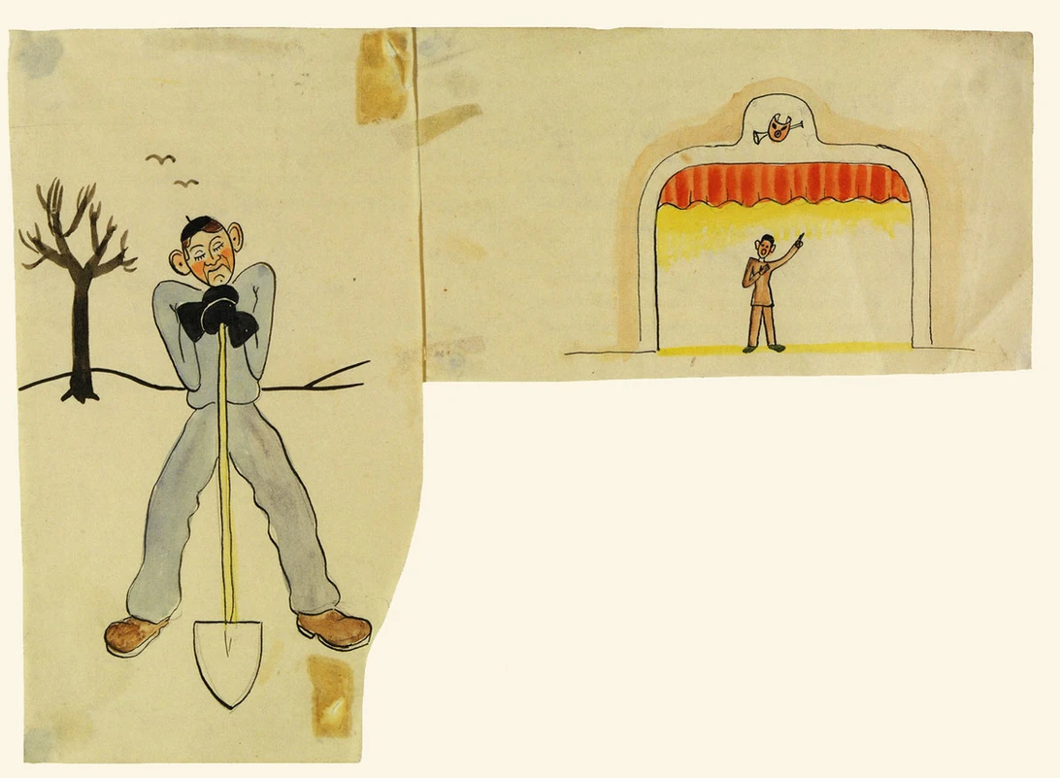
Exhibition Featuring Czech Jewish Painters: "To Paint is to Live: Art & Resistance in Theresienstadt"
22.02.2024 / 02:36 | Aktualizováno: 22.02.2024 / 02:42
INVITATION:
The Consulate General of the Czech Republic in Los Angeles is delighted to invite you to the ongoing exhibiton To Paint is to Live: Art & Resistance in Theresienstadt highlighting the life and works of Czech Jewish painters who were imprisoned in Theresienstadt. The exhibition will be on display until November 30th, 2024, at Holocaust Museum LA
WHEN & WHERE:
The exhibition will run until November 30th, 2024, at Holocaust Museum LA
Address: 100 The Grove Dr, Los Angeles, CA 90036
TICKETS:
Tickets are available at the museum's box office or in advance online HERE
ABOUT THE EXHIBITION AND FEATURED ARTISTS:
Established by the Nazis on November 24, 1941, Theresienstadt played a critical role in the Nazi Government’s deceptive propaganda to quell questions surrounding the deportations of Jews and their fate. The Nazis presented Theresienstadt as a model “settlement” or “spa” town but, the harsh reality was that it was a place designed to accelerate death.
Jews resisted the horrific surroundings and cruel treatment in any way they could, wielding their brushes and pens as instruments of resistance. "To Paint is to Live'' reveals the profound role of art in reaffirming human dignity as prisoners turned to creative expression to assert their identity, chronicle their existence, and honor their cultural heritage in the face of unspeakable atrocities.
Highlighting the untold stories of endurance through remarkable art works of those who survived and perished, this exhibition challenges us to contemplate the transformative power of art when faced with extreme adversity and reflect on the capacity for maintaining human dignity.
Erich Lichtblau-Leskly
Strikingly different from other artwork created during the Holocaust, Czech artist Erich Lichtblau-Leskly commented on the social and political environment, giving voice to the experiences that were too horrific to put into words. Fearing being found out and tortured like other artists, Lichtblau-Leskly removed captions and cut up his art for his wife to hide under her barrack. Following liberation, the couple retrieved the hidden pieces and began restoring them. Lichtblau-Leskly meticulously re-created the original scenes in detailed, vivid large watercolors “so that every survivor was able to see and understand their meanings.”
Leo Haas
Czech artist Leo Haas' art was labeled “degenerate” by the Nazis in 1937 and in 1939 he was arrested. In Theresienstadt, Haas documented the horrors of daily life, depicting transports, scenes of the facade for the Red Cross visit, prisoner performances, and other harsh realities of existence as a Jew in Theresienstadt. In June 1944, The SS brutally tortured Haas along with fellow artists Otto Ungar, Bedrich Fritta, Felix Bloch, and Norbert Troller for creating clandestine art. After 3 months of torture, Haas and Fritta were deported to Auschwitz, where Fritta was killed. Following liberation, Haas adopted Fritta’s surviving son, Tomáš. Until his death in 1983, Haas continued to create art to bear witness.
Moritz Müller
With the Nazi occupation of Prague in March 1939, Moritz Müller, a gifted artist, was forced to appraise the works Nazis confiscated from Jews. In Theresienstadt, Müller harnessed his artistic skills to document the faces dying around him, ensuring that they would be remembered and honored through his work. He was punctilious about sketching patients, always recording the date and individual’s identity. Müller was deported to and murdered in Auschwitz in October 1944. His artwork survived in hiding through the care of his friend, Eva Beckmann (nee Schick).
Fred Beckmann
Bedrich (Fred) Beckmann worked for Prague’s leading architectural firms designing both corporate and private residences. ln March 1939, Nazi Germany invaded, and Beckmann lost his job for being Jewish. Beckmann's background endowed him with a keen eye for spatial details and structural elements, enabling him to intricately depict the physical buildings of Theresienstadt which served as tangible evidence of the camp's existence and the harsh realities within its confines. After the war, he reunited with and married fellow survivor Eva Schick, whom he had met in Prague prior to the Holocaust. The couple settled in Los Angeles where Fred continued to work as an architect.




